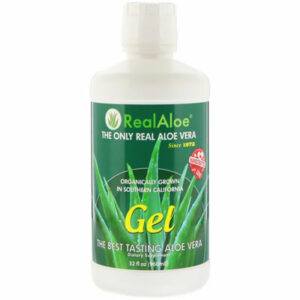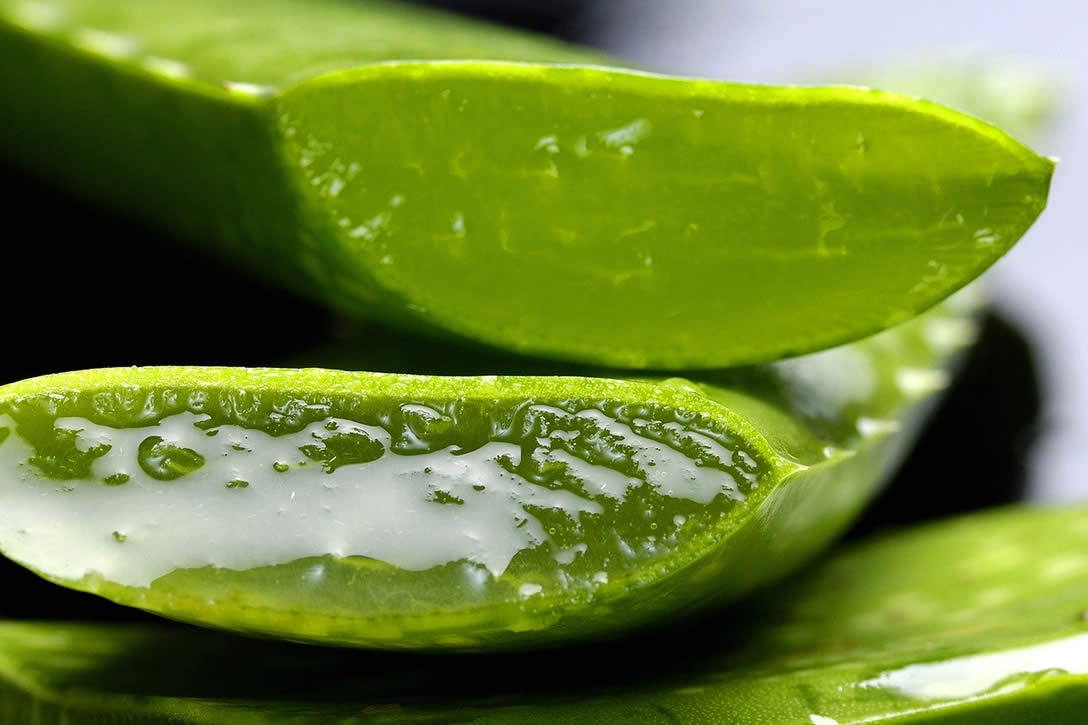What are the uses of Aloe?
Aloe is a plant that looks like a cactus and grows in a hot, dry environment. The most practical parts are Gel and Latex.
The gel is taken from inside the Aloe leaves, and the latex is the part between the gel and the epidermis of the leaves.
What are the benefits of the aloe?
For medical purposes, Aloe can be taken orally or applied to the skin.
Oral administration is usually used to improve weight loss, Diabetes, Hepatitis, Inflammatory Bowel Diseases, Osteoarthritis, Stomach Ulcers, Asthma, and Radiation-related Skin Sores, fever, itching, and inflammation, or as a general supplement.
Aloe’s latex can also be taken orally as a laxative to improve constipation. In addition, it can also be used to treat, Seizures, asthma, colds, bleeding, menstrual delay, Colitis, Depression, Diabetes, Glaucoma, Multiple Sclerosis, Hemorrhoids, Varicose Veins, Joint Inflammation, osteoarthritis, and vision problems.
In addition, fresh Aloe leaves can also be taken to treat cancer.
Aloe gel can be applied to the skin to improve acne, Lichen Planus, oral inflammation, Burning Mouth, radiation-induced skin injuries, Dental Plaque, Diaper Rash, Frostbite, Gum Disease, Bedsores, Scabies, Dandruff, wound healing, hemorrhoids, Relieve the pain after surgery, treat internal hemorrhoids, osteoarthritis, inflammation, and can also be used as a disinfectant.
Aloe extract and gel can also be applied to the skin to improve Genital Herpes, skin itching, itching, burns, sunburn, and dry skin.
Aloe extract can also be applied to the skin to repel insects; leaf juice can also be wiped to improve anal fissures.
Aloe contains a chemical substance called Aloe polysaccharide, which can improve Dry Sockets and Canker Sores after tooth extraction in the oral cavity.
Aloe’s efficacy principle
There are not enough studies to show how this herbal supplement works, so please consult a physician or herbalist for more information.
However, it is now generally determined that Aloe has the following effects:
- Aloe gel can improve skin conditions such as psoriasis and other diseases.
- Aloe may improve blood circulation and reduce cell necrosis, thus accelerating the speed of wound healing.
- Aloe gel may contain substances that can kill certain bacteria and fungi.
- Aloe latex contains some chemicals and can be used as a laxative.
Precautions
If you have the following situations, please consult a physician, pharmacist, or herbalist:
- Pregnancy or lactation: If you are pregnant or breastfeeding, you should only take the medicine recommended by your doctor.
- Are taking other medicines: including prescription medicines or medicines without a prescription.
- Allergic to any substance containing Aloe: or allergic to other drugs or herbs.
- Suffering from other diseases: for example, disorders of the physiological system, or any other health conditions.
- Allergies to certain substances: such as specific foods, artificial colors, preservatives, or animal allergies.
Compared with the regulation of medicines, the regulation of herbal medicines is less strict, and more research is needed to prove its safety.
Before use, please make sure that the benefits outweigh the risks. It is recommended to consult an herbalist or physician for more information.
Is it safe to use Aloe?
Aloe is generally safe if used in appropriate amounts on the skin for medical or cosmetic purposes.
Oral Aloe is generally safe if used in moderation in the short term.
At present, it is known that taking 15 ml of Aloe gel per day for 42 consecutive days or using a solution containing 50% Aloe twice a day for 4 weeks, is not harmful to humans.
There is also a gel compound, 600 mg (mg) per day, continuous use for 8 weeks, is also safe and harmless.
However, Aloe latex is dangerous regardless of dosage, especially when high dosages are used.
Precautions
Women who are pregnant or breastfeeding
Pregnant women may not be safe to take Aloe, whether it is gel or latex. There have been cases where Aloe may cause miscarriage or birth defects.
Therefore, women who are pregnant or breastfeeding should avoid using them as much as possible.
Children
It is generally safe to use Aloe gel on the skin in a short period of time. However, children may be dangerous if they take Aloe latex or whole leaf extract. Children under 12 years of age may experience abdominal pain, cramps, and diarrhea.
Diabetics
Studies have found that Aloe may lower blood sugar. Therefore, if you have diabetes, you must closely monitor your blood sugar after taking Aloe.
Patients with intestinal diseases
Such as Crohn’s disease, Ulcerative colitis, Obstruction, etc. Aloe latex stimulates the intestines, so if you have these intestinal diseases, you should never take Aloe. And remember, the products made by Aloe Whole Leaf also contain latex, so they should not be used.
Patients with hemorrhoids
Do not use Aloe latex, otherwise the symptoms will worsen. And remember, the products made by Aloe Whole Leaf also contain latex, so they cannot be used.
People with kidney problems
Using large amounts of Aloe latex may cause kidney failure and other major problems.
Patients undergoing surgery
If Aloe is used, blood sugar control may be affected during or after surgery. Therefore, the use of Aloe is prohibited 2 weeks before the operation.
Potential side effects of using Aloe
Possible side effects include stomach pain and cramps. Long-term use of Aloe latex may cause diarrhea, kidney problems, hematuria, low potassium, muscle weakness, weight loss, Arrhythmia, etc.
As long as one gram of Aloe latex is taken for several days, it is enough to be fatal.
There are also cases where patients have liver problems after taking Aloe whole leaf extract; however, this situation is not common.
Doctors generally believe that this will only happen to people who are allergic to Aloe.
Not everyone will have these symptoms, and the above may not include all side effects. If in doubt, please consult a physician or herbalist.
Potential interactions using Aloe
Aloe may interact with the medication you are taking or the disease you have.
Please consult an herbalist or physician before use. Products that may interact with Aloe include:
Digoxin
Aloe latex can be taken orally as a laxative, called Stimulant laxatives, which will reduce the amount of potassium in the body, thereby increasing the risk of side effects of digoxin.
Antidiabetes Drugs
Aloe gel may lower blood sugar, and diabetes drugs have the same function. If used together, it may make blood sugar too low.
Therefore, please closely monitor the blood sugar situation, you may also need to change the dosage of diabetes drugs.
Diabetes drugs include: Glimepiride, Glyburide, DiaBeta, Glynase PresTab, Insulin, PioglitazoneR, osiglitazone, Chlorpropamide, Glipizide, Tolbutamide, etc.
Oral drugs
Aloe latex can be used as a laxative when taken orally, which will reduce the body’s ability to absorb other drugs and reduce the efficacy of oral drugs.
Sevoflurane
Sevoflurane is used in anesthesia during surgery to reduce blood clotting, and Aloe may also reduce blood clotting, so if you use Aloe before surgery, it may increase the amount of bleeding during surgery.
Therefore, do not take Aloe by mouth 2 weeks before the operation.
Stimulant laxative
Aloe latex can be used as a laxative when taken orally, called a stimulant laxative, which will speed up the peristalsis of the intestines.
If you take Aloe latex and other stimulant laxatives at the same time, it may cause the intestines to move too fast, causing the body to lose too much water and minerals.
Stimulant laxatives include Bisacodyl, Dulcolax, Cascara, Castor oil, Senna, etc.
Warfarin
Aloe latex can be used as a laxative when taken orally, called a stimulating laxative, which will speed up the peristalsis of the intestines.
Some people may have diarrhea, which may increase the efficacy of warfarin and increase the risk of bleeding.
Therefore, if you are taking warfarin, you should never use too much Aloe latex.
Water pills/Diuretic drugs
Aloe latex can be used as a laxative when taken orally, which will reduce the amount of potassium in the body.
Diuretics can also reduce potassium, so if taken at the same time, the amount of potassium in the body may be too low.
Diuretic packs that reduce potassium: Chlorothiazide, Chlorthalidone, Furosemide, Hydrochlorothiazide, etc.
Recommended dosage
The following information is not a medical diagnosis, please consult a physician or herbalist before using.
What is the general usage?
Adult oral:
- Improve constipation: Take 100~200 mg of Aloe or 50 mg of Aloe extract at night. In addition, you can also use a 500 mg capsule containing Aloe. Take 1 capsule a day initially, and then increase to 3 capsules if necessary.
- Help weight loss: There is an Aloe gel complex containing 147 mg of Aloe, which can be used twice a day for 8 weeks.
Adults apply to the skin:
- Improve acne: After washing your face in the morning and evening, you can use products containing 50% Aloe gel. At night, you can mix it with products containing A acid (Tretinoin) gel.
- To improve burns and scalds: Aloe or olive oil cream can be used for 6 weeks, 2 times a day. In addition, Aloe cream can also be used after changing the medicine, twice a day, or once every 3 days, until the wound heals.
- Improve herpes: You can use a cream containing 0.5% Aloe extract, apply it 3 times a day for 5 consecutive days, or apply it 1 to 2 times within 2 weeks.
- Improve lichen planus (itchy rash on skin or mouth): Aloe gel can be applied to the skin part and applied for 2 to 3 times a day for 8 weeks. For the oral cavity, use 2 teaspoons of Aloe mouthwash, spit it out after 2 minutes of gargle, and use 4 times a day for 1 month.
- Improve oral submucosal fibrosis (an oral disease): You can use an Aloe gel 5 mg, apply to the cheeks, 3 times a day for 3 months.
- Treatment of psoriasis: Use 0.5% Aloe extract cream 3 times a day for 4 weeks. A cream containing Aloe can also be used twice a day for 8 weeks.
Children apply to the skin:
- Improve acne: You can use 50% Aloe gel, use it after washing your face in the morning and evening, and then use products containing A acid gel at night.
- Improve oral submucosal fibrosis (an oral disease that may evolve into cancer): An Aloe gel 5 mg can be applied to the cheeks for 3 months and 3 times a day.
The dosage of each patient may be different and will be affected by age, health, and other diseases.
Herbal supplements are not necessarily safe. Therefore, please consult an herbalist or physician to find out the dosage that is right for you.
Type of finished product
Aloe usually has the following form:
- Aloe leaf juice
- Aloe Capsule/Softgel
- Aloe gel (for topical use)
Where can I buy Aloe products?
In recent years, food safety problems in various countries have exploded, and it is not healthy but black-hearted products that everyone spends on. Therefore, European and American products with relatively strict quality control have become popular products.
And iHerb.com is a large-scale medical cosmetics e-commerce company in the United States. It has a high satisfaction rate of 97% in the evaluation of Google customers. It provides global home delivery so that you can buy it without risking buying fakes through purchasing high-quality health products.

